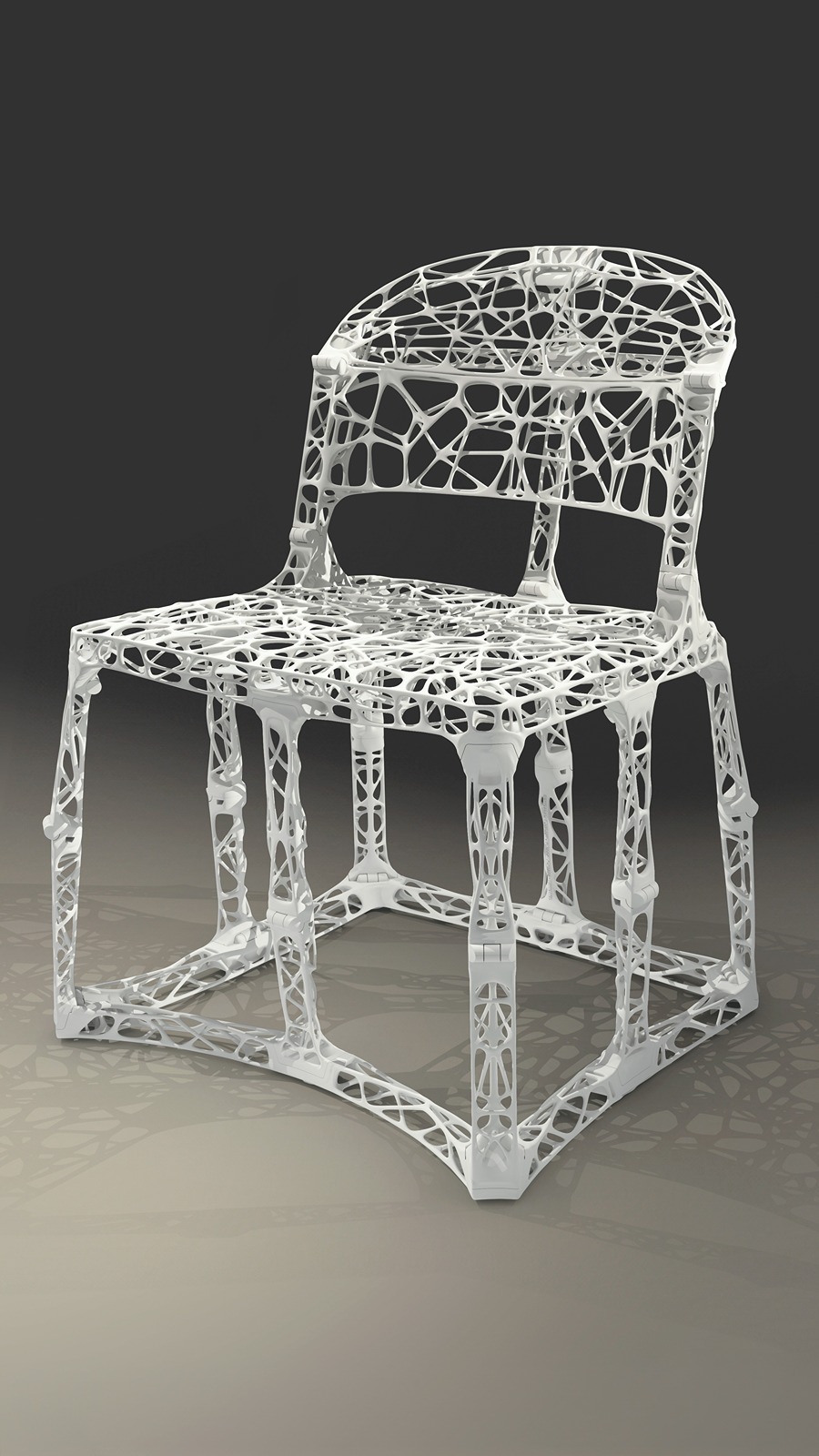Dassault Systèmes and the French designer Patrick Jouin unveiled “Ta.Tamu,” a lightweight, 3D-printed and functional chair, co-created using the 3DEXPERIENCE platform on the cloud. Ta.Tamu serves as a proof of concept for emerging, generative design processes that combine AI-powered virtual twins and the frugal use of materials to drive the generative economy.

Ta.Tamu is the result of a four-year dialogue between Patrick Jouin’s intuitive design approach and Dassault Systèmes’ 3DEXPERIENCE platform. Designers and engineers redefined how a chair could be conceived — challenging traditional design methods, pushing formal and structural limits, and inventing new ways to minimize matter.
Developed through enhanced ideation and concept development, and a life cycle assessment integrated early in the process, Ta.Tamu’s pioneering aesthetics were inspired by biomimicry and the structural logic of the human body, such as bone density and joint articulation. The light yet robust lattice structure weighs just 8.6 pounds (3.9 kg), can support 220 pounds (100 kg), and can be 3D printed in a flat, folded position without needing assembly.
Collaborating around an AI-powered virtual twin, design teams modeled and simulated the behavior of complex assembled components, using topological optimization to refine every joint, unfolding articulation, and zone of pressure and support. At each stage, the design evolved in real time through close interaction with the 3DEXPERIENCE platform, with changes updated and visible in the virtual twin. Teams modified the chair’s geometry while balancing its aesthetics, resulting in an optimal design where gesture, function, and structure converge in a chair that weighs 75% less than it would have weighed at full density.
For more information, visit 3ds.com.
The post Dassault Systèmes and Patrick Jouin unveil “Ta.Tamu” appeared first on Engineering.com.

